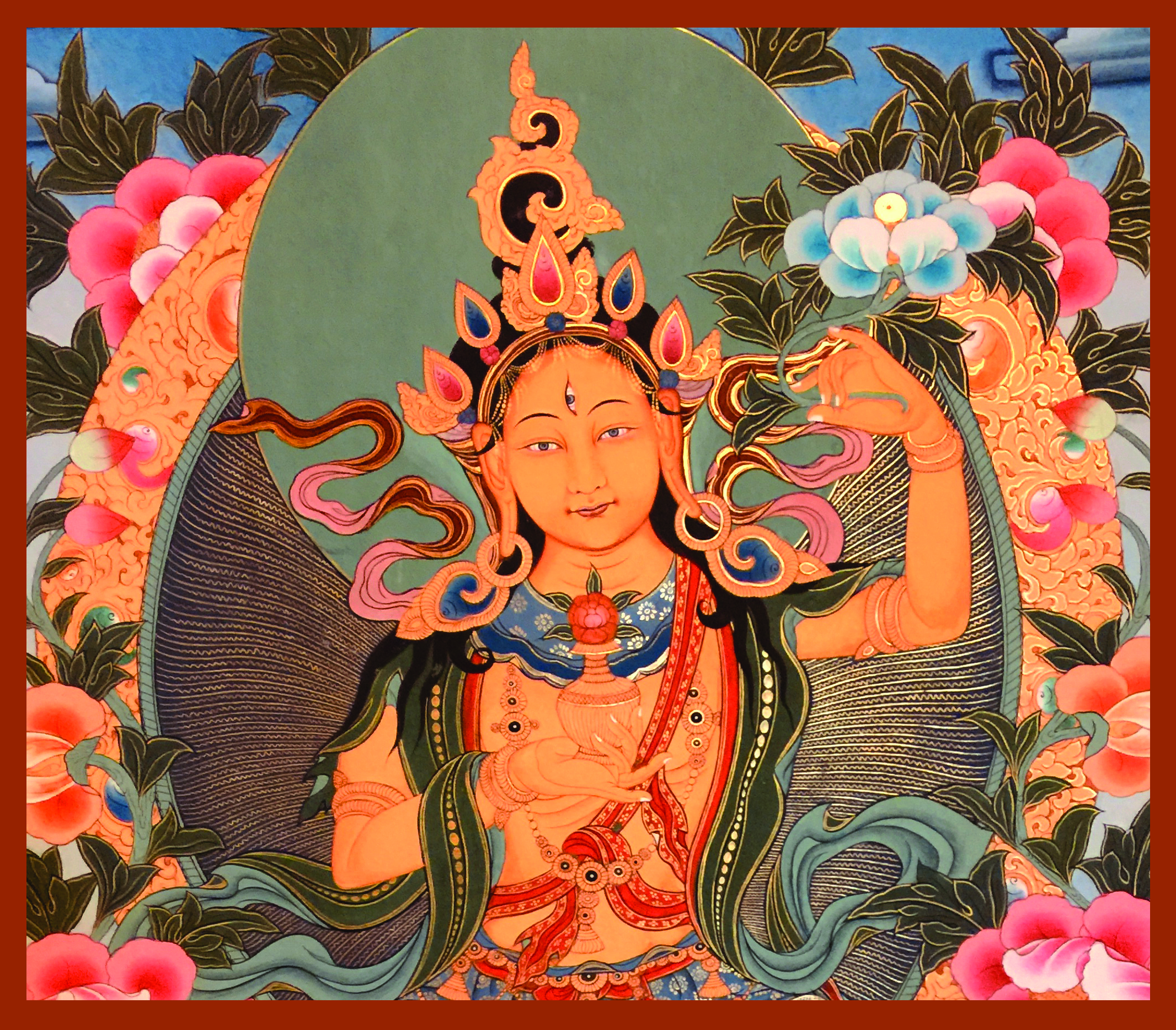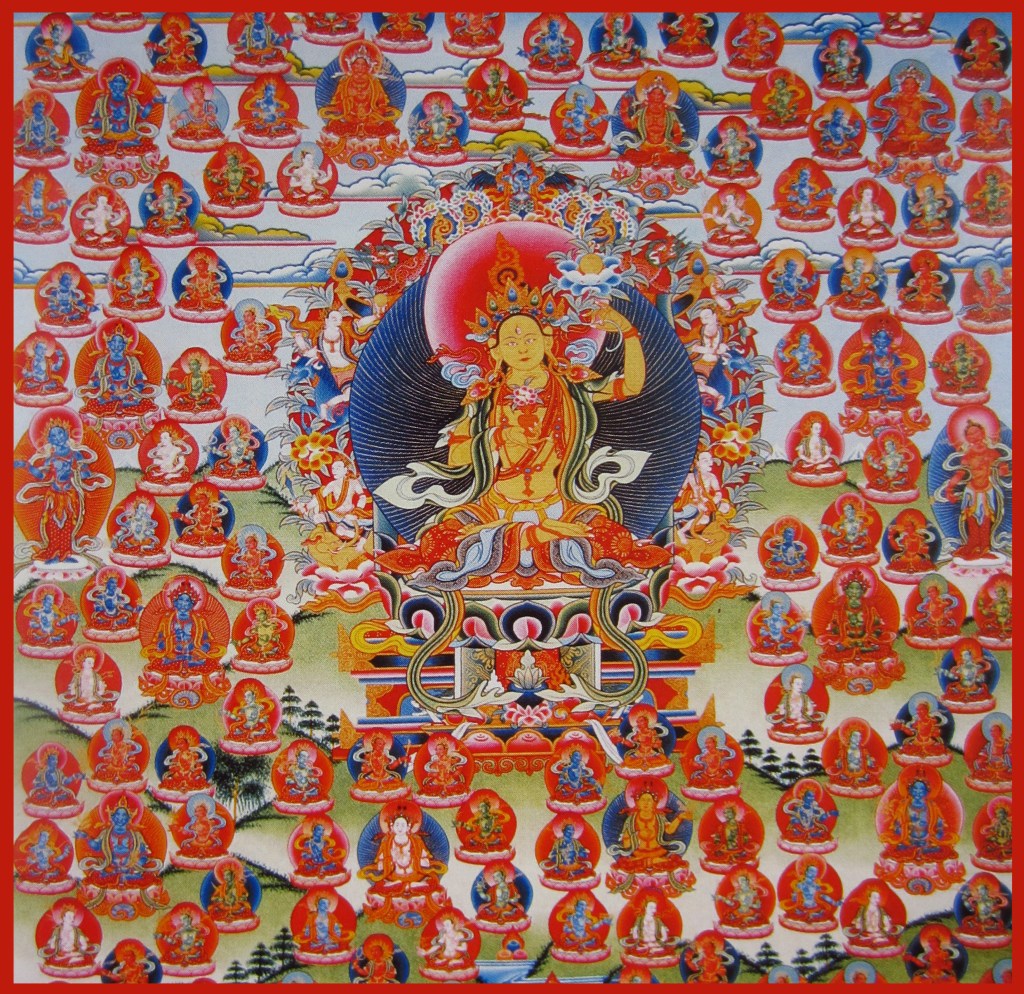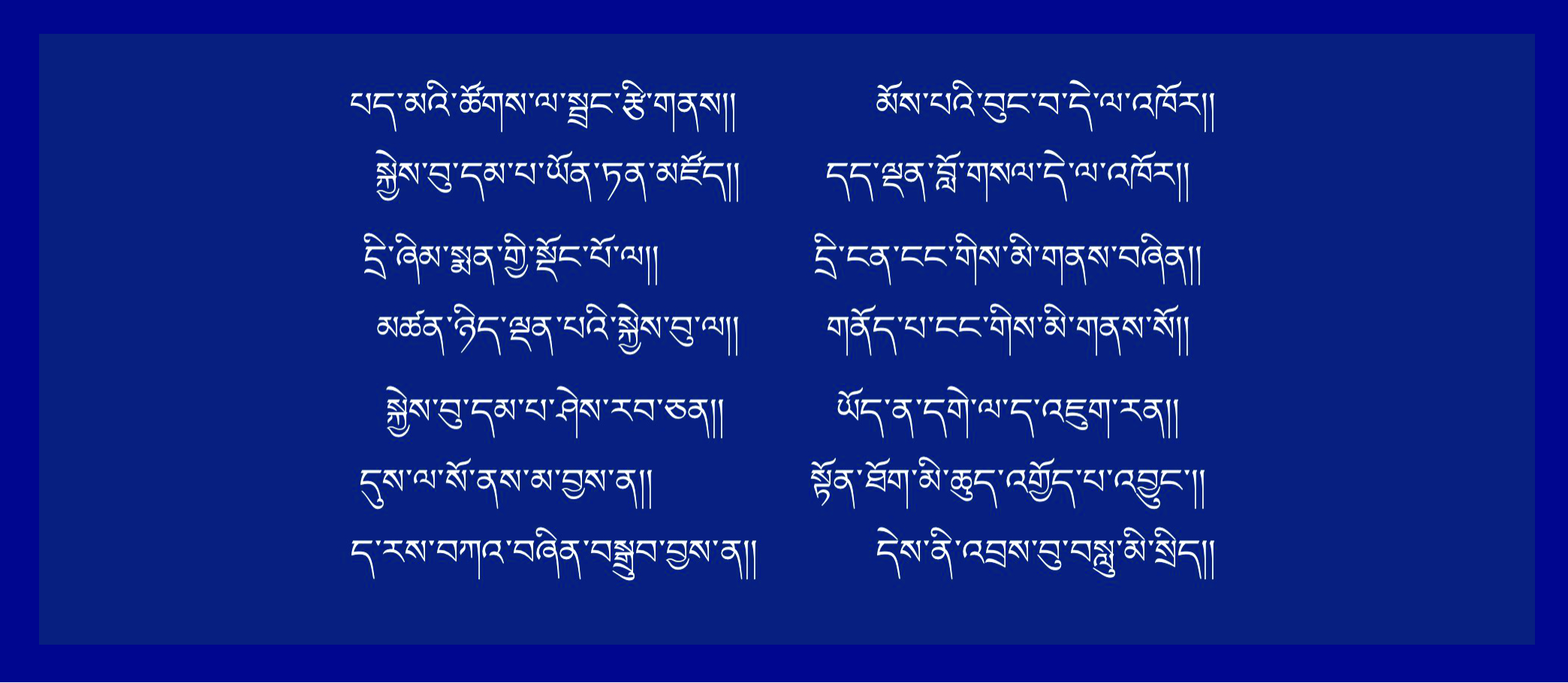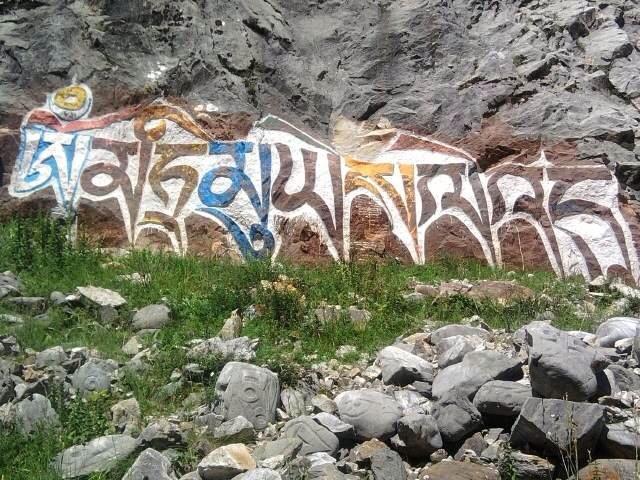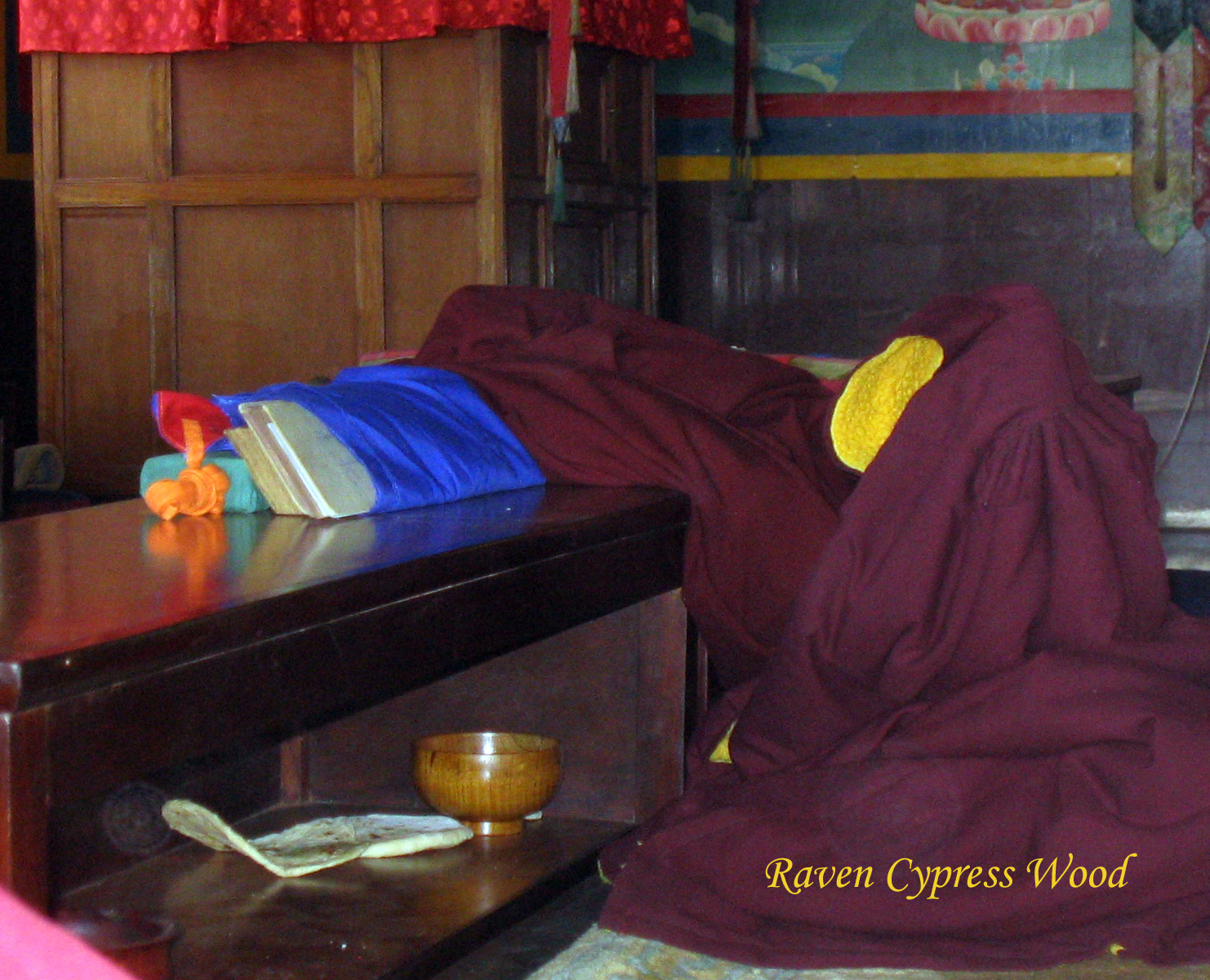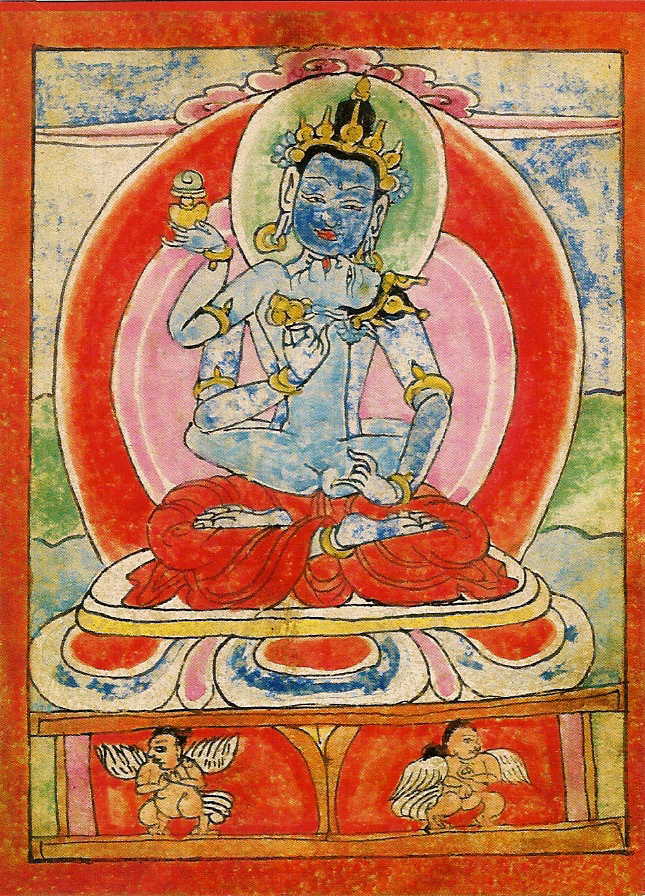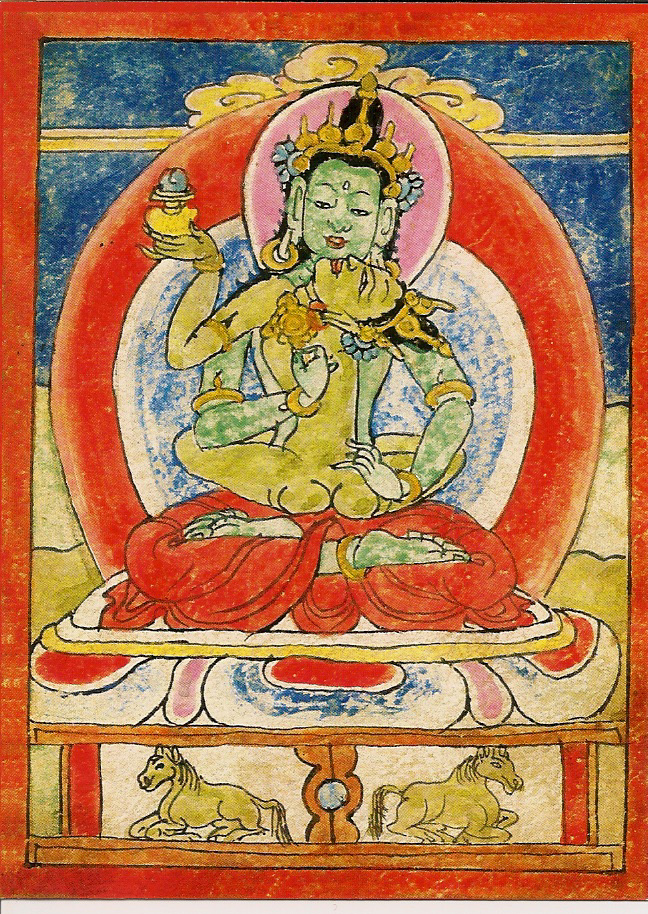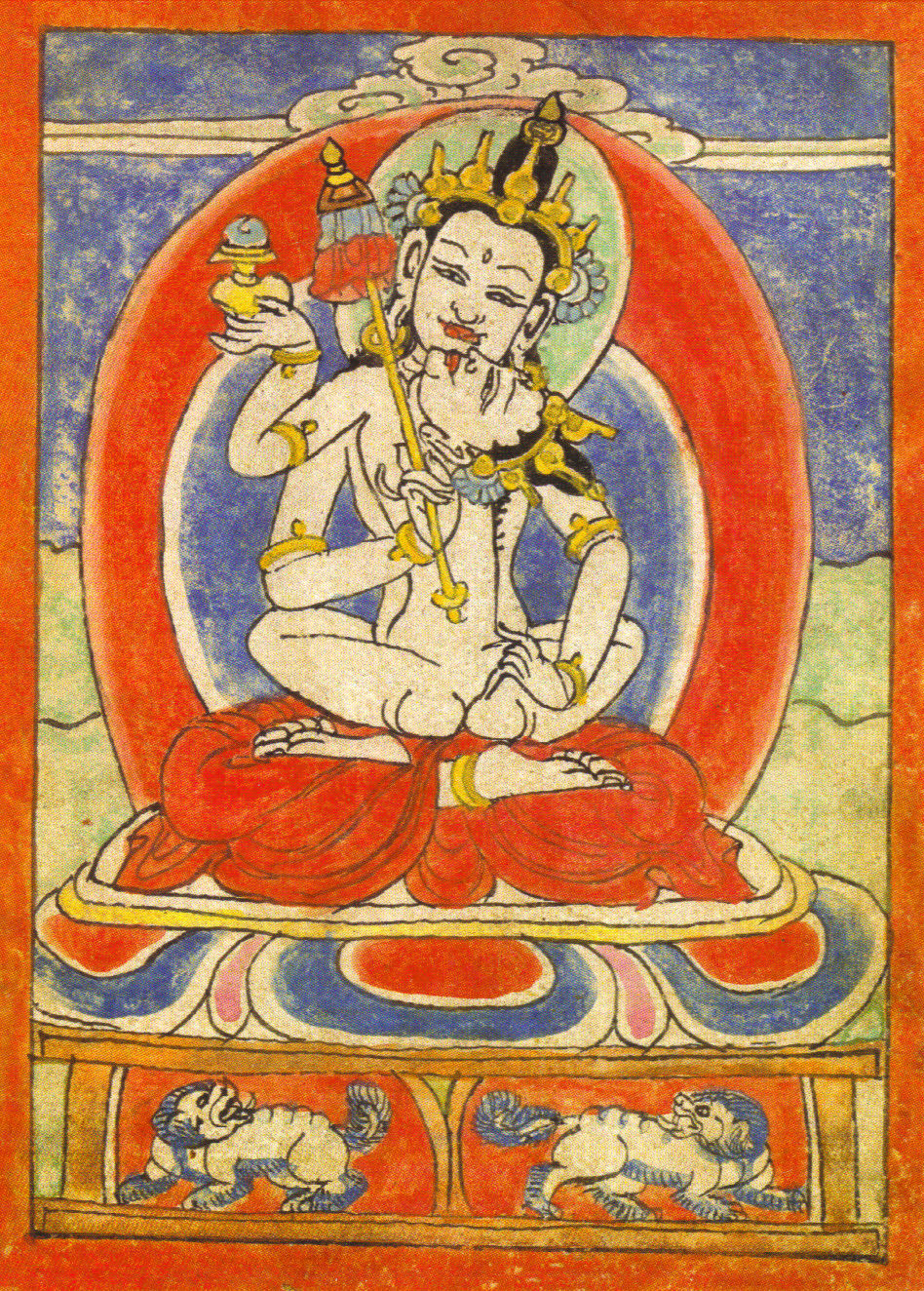Each year during the 23rd-29th lunar days of the 5th month, members of the Menri Monastery ordained community undergo a retreat for Jamma Chenmo, the Great Loving Mother. This year, those lunar dates coincide with July 10th-16th, 2023 on the Western calendar.
Jamma Chenmo, the Great Loving Mother, is a Buddha who manifests as a loving mother to care for each and every sentient being as though they were her only child. In her manifestation as one of the Four Transcendent Buddhas of the Yungdrung Bön religious tradition, she is called by the Zhang Zhung name Satrik Érsang.
Buddha Jamma Chenmo, also known as Sherap Jamma, can manifest in any way necessary to act for the welfare of sentient beings. She magically emanates as the Five Wisdom Families who are the manifestation of her enlightened body, the Eight Protectors who are the manifestation of her enlightened speech, the Sixteen Door Openers who are manifestations of her enlightened mind, the thirty-two emanations who are manifestations of her enlightened qualities, the fifty-two emanations that are manifestations of her enlightened activity, the 108 emanations who are the source of many Jamma scriptures, the 360 emanations who keep watch over the five elements of the phenomenal world and every kind of sentient being, the 5,500 emanations that are yungdrung sempa [Sanskrit:bodhisattvas], and the many limitless emanations who are part of her retinue and who work on her behalf.
The Five Wisdom Manifestations of Jamma Chenmo
Jamma Chenmo’s Five Wisdom Family emanations all have a peaceful appearance and collectively embody the five wisdoms and purify the five poisons. These five manifestations are Künsel Jamma, Tabgyi Jamma, Mönlam Jamma, Tukjé Jamma, and Topgyi Jamma. Künsel Jamma, the All-clear Loving Mother, is a fiery golden color. She has one face, two arms, and two legs. In her right hand, she holds a golden vase of nectar. In her left hand, she holds a udumbara flower. At the flower’s apex is a round mirror symbolizing wisdom. She wears bracelets of crystal, and around her neck is an ornament of forty wisdom tiklés. She is the embodiment of the wisdom of emptiness.
Tapgyi Jamma, Loving Mother of Skillful Means, is white with one face, four arms, and two legs. In her two right hands, she holds a net and a lotus. In her two left hands, she holds a lightening bolt and a yungdrung. She is the embodiment of mirror-like wisdom.
Mönlam Jamma, Loving Mother of Aspiration, is also known as Namkha Dzö Dzinma, Holder of a Sky Treasury. She is green with one face, four arms, and two legs. In her right two hands, she holds a razor and a staff. In her two left hands, she holds a renunciate’s begging bowl and a vase of lustral water. She is the embodiment of the wisdom of equanimity.
Tükjé Jamma, Loving Mother of Compassion, is like the queen of all the khandro and also manifests as the great consort, Chema Ötso. She is red with one face, four arms, and two legs. In her right two hands, she holds a lasso and a sun. In her left two hands, she holds a precious jewel and a victory banner. She is the embodiment of discriminating wisdom.
Topgyi Jamma, Loving Mother of Power, is also known as Nang Si Kün Drakma, Goddess who is renowned throughout the phenomenal universe. She is blue with one face, four arms, and two legs. In her right two hands she holds a dagger and a military banner. In her left two hands, she holds a horoscope and an utpal flower. She is the embodiment of all-accomplishing wisdom.
This cycle of tantric teachings of Künsel Jamma Chenmo are found in the 8th Way of Bön, The Way of the Primordial Shen.
“Although Bön is abundant and plentiful, this Great Vehicle of the Primordial Shen is different from the lower 7th Vehicle. The king of all oral transmissions, those transmissions spoken with words, is the Bön cycle of Künsal Jamma Chenmo.”
— From Jamma’s 100,000 Empowerments
Raven Cypress Wood ©All Rights Reserved. No content, in part or in whole, is allowed to be used without direct permission from the author.
Don’t want to miss a post? Scroll to the bottom and click “Follow this blog.”
Want to join the mandala of Nine Ways supporters? Follow this link https://ravencypresswood.com/donate/
